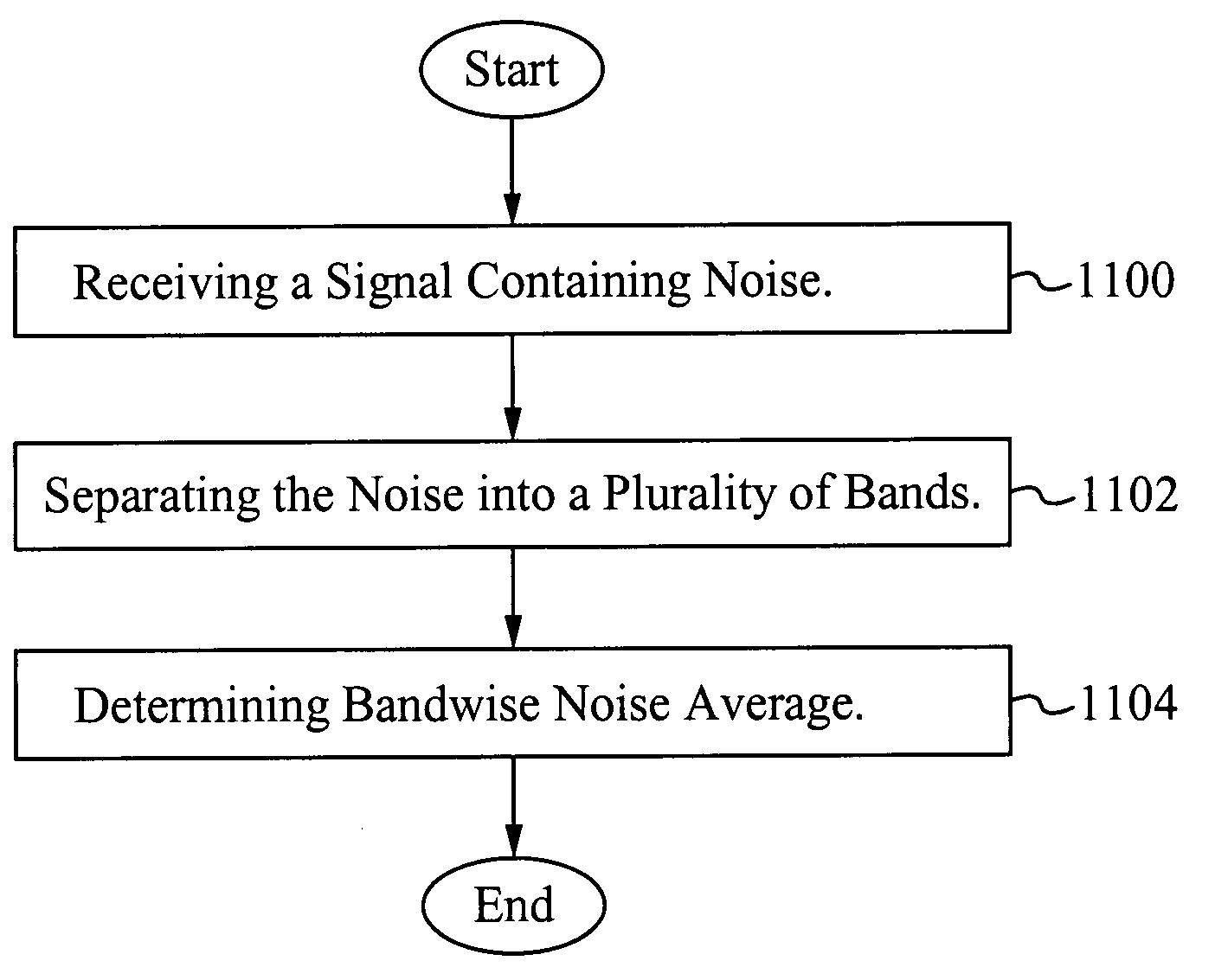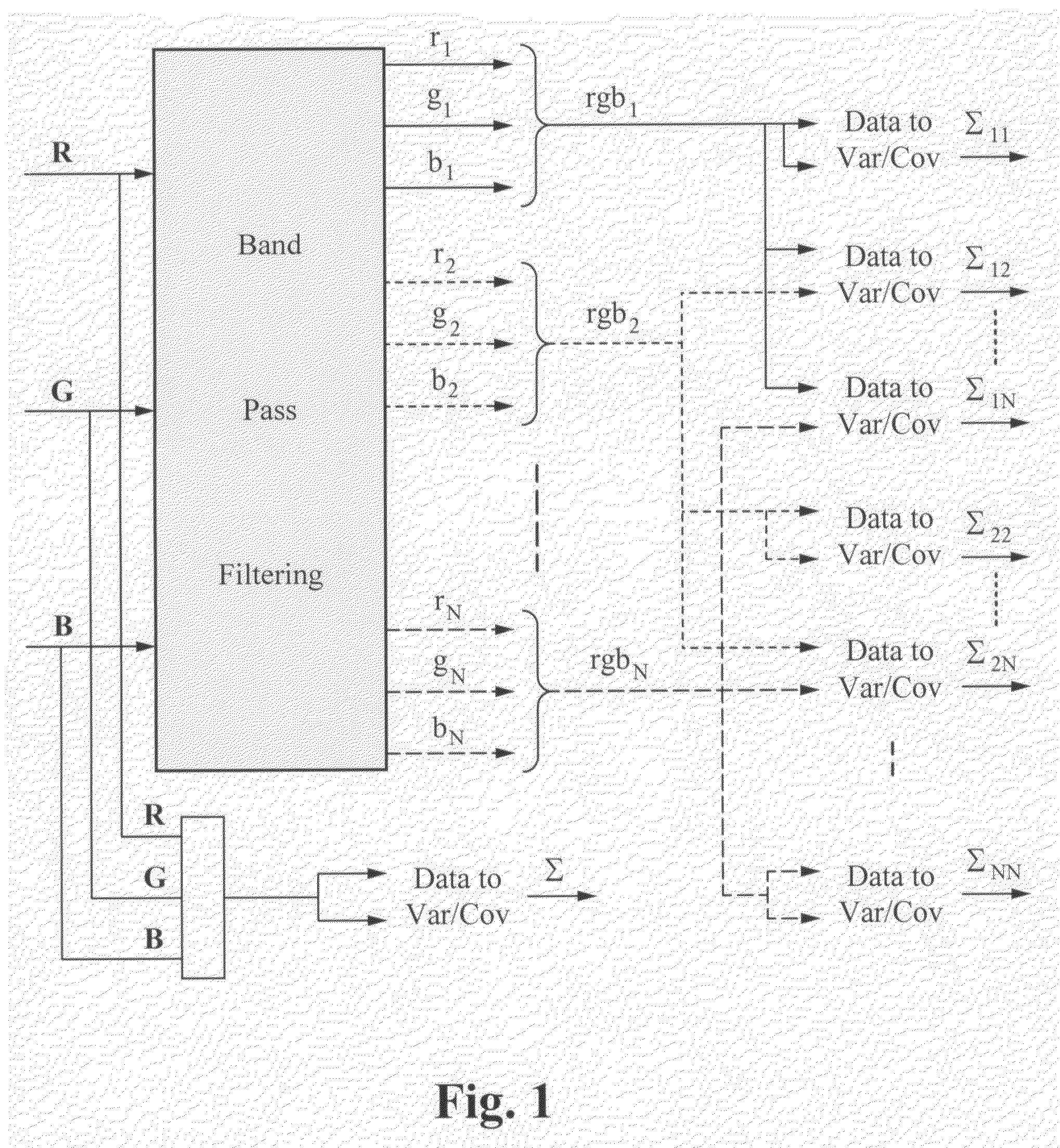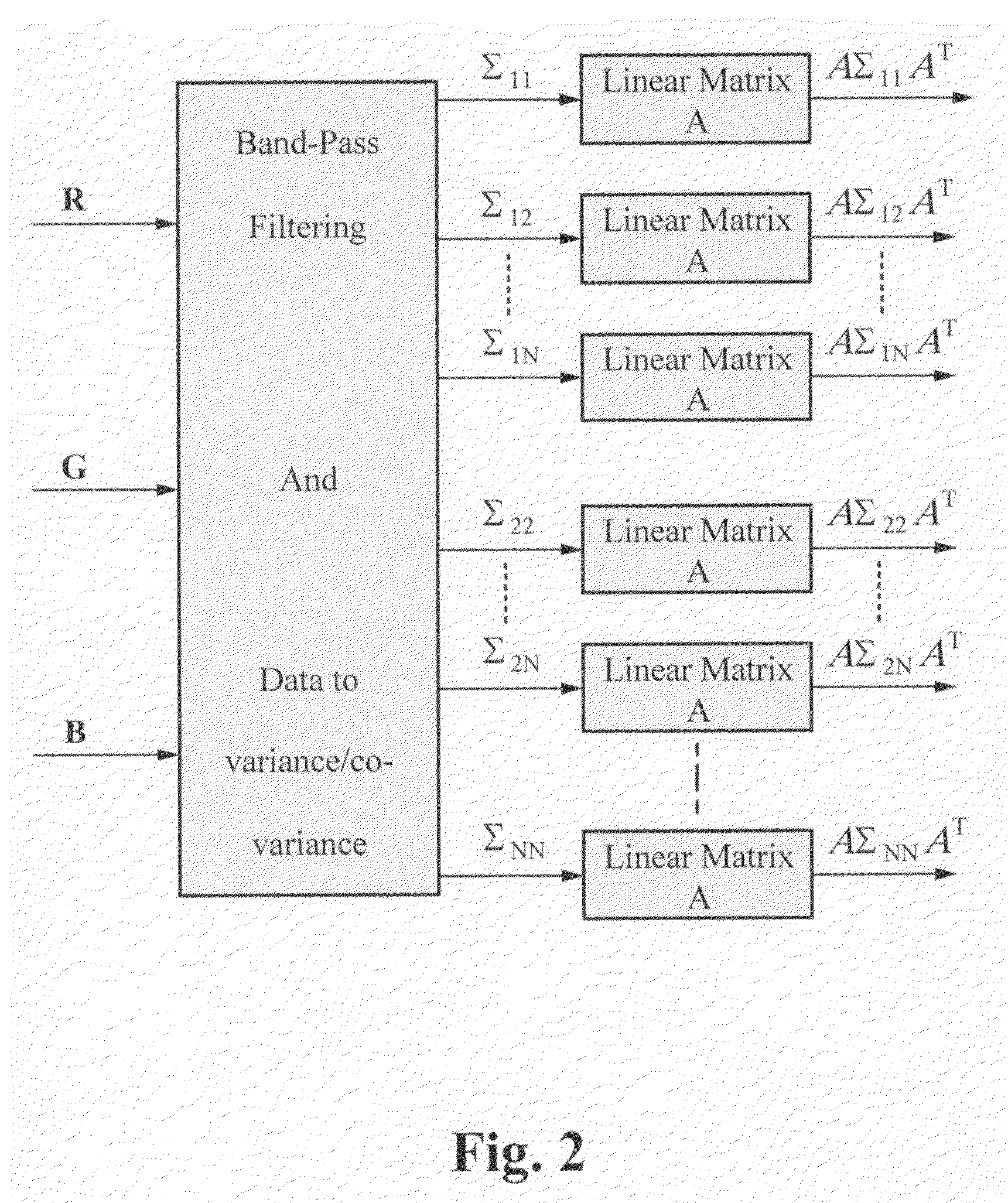Method of and apparatus for analyzing noise in a signal processing system
a signal processing system and noise analysis technology, applied in the field of signal processing, can solve the problem that computation complexity is a very small fraction of computational cost, and achieve the effect of computational complexity and fast and accurate manner
- Summary
- Abstract
- Description
- Claims
- Application Information
AI Technical Summary
Benefits of technology
Problems solved by technology
Method used
Image
Examples
Embodiment Construction
[0022]A noise analysis framework for propagating both colored and white noise through all types of operations (linear, non-linear and spatial) is described herein. Input noise is decomposed into sub-bands and sub-band noise is propagated through a signal processing pipeline. Using this, it is possible to exactly predict sub-band noise after a linear or a non-linear (linearized via a Jacobian) transformation. For predicting noise after a spatial operation, the energy of the spatial operation is a-priori decomposed into sub-bands. By considering the noise to be band-wise white and by using ideal (or near-ideal) bandpass filtering, the sub-band noise after a spatial operation or transformation is simply the product of the sub-band noise energy before this operation, the sub-band energy of the spatial transformation and the number of sub-bands.
[0023]By decomposing noise in each channel into sub-bands and by assuming sub-band noise to be white within each band, noise is able to be accura...
PUM
 Login to View More
Login to View More Abstract
Description
Claims
Application Information
 Login to View More
Login to View More - R&D
- Intellectual Property
- Life Sciences
- Materials
- Tech Scout
- Unparalleled Data Quality
- Higher Quality Content
- 60% Fewer Hallucinations
Browse by: Latest US Patents, China's latest patents, Technical Efficacy Thesaurus, Application Domain, Technology Topic, Popular Technical Reports.
© 2025 PatSnap. All rights reserved.Legal|Privacy policy|Modern Slavery Act Transparency Statement|Sitemap|About US| Contact US: help@patsnap.com



